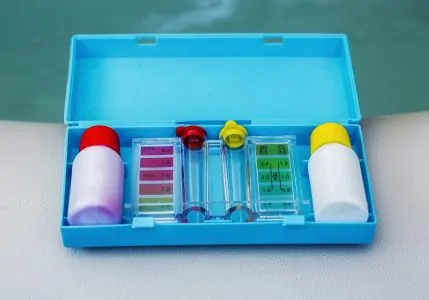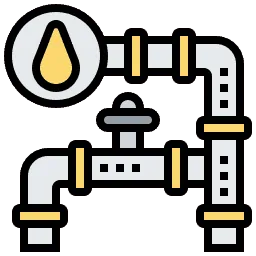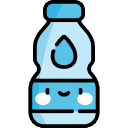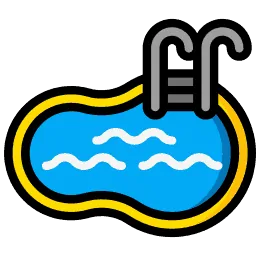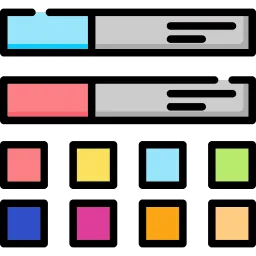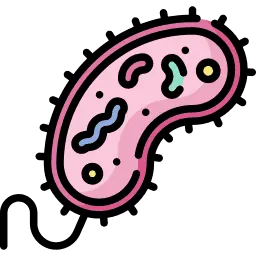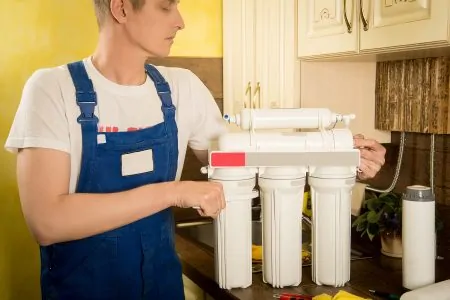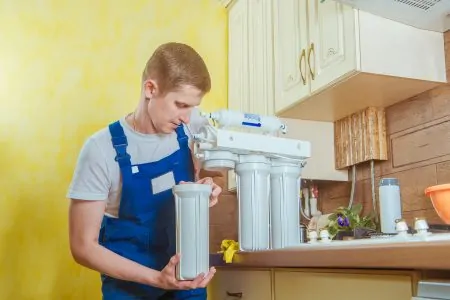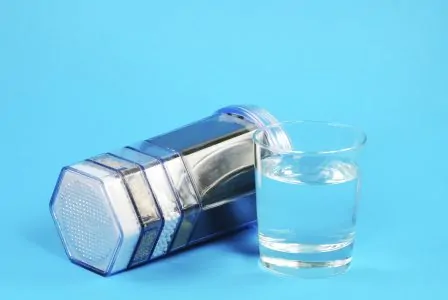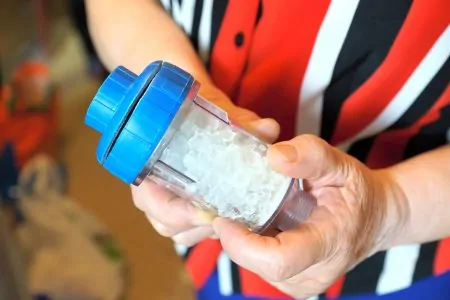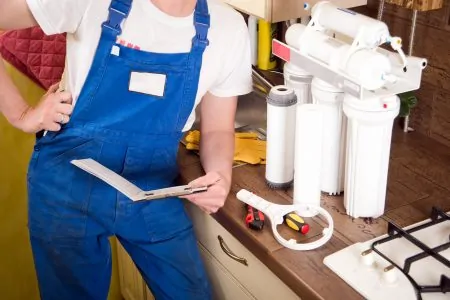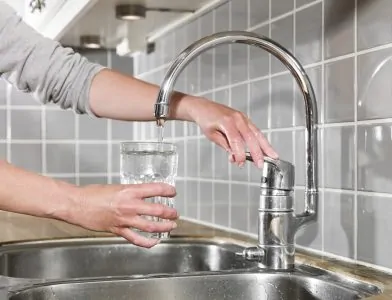Modern plumbing and water treatment mean more people have access to clean water than ever before. Municipal water supplies are closely monitored to ensure they are safe to bathe in and drink.
However, even if the water that leaves these treatment plants is safe, this doesn’t necessarily mean it will be clean when it reaches your home. If you are concerned about your water quality, you can buy a testing kit that will check for many different contaminants.
To help you find the right product for your home, we have reviewed seven of the best water test kits that are currently available. We chose these kits based on the testing method, the range of contaminants they can detect, and whether they are designed for municipal or private water sources.
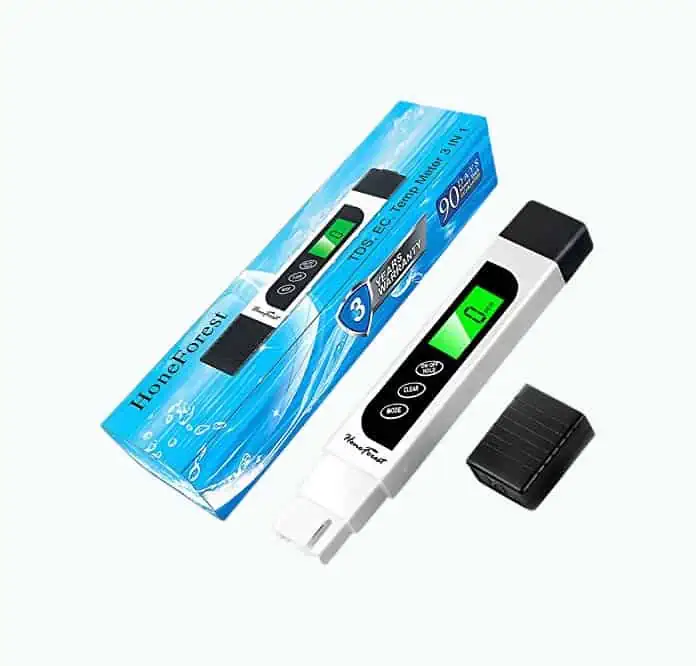
- 3-year warranty
- Measures electric conductivity
- Digital LED display
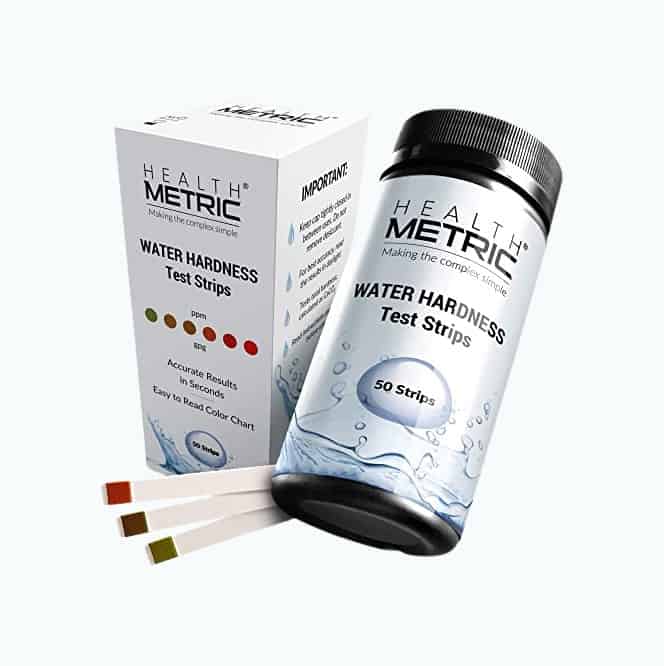
- Results in 30 seconds
- Contains 50 strips
- Large color chart

- No lab test required
- Works in seconds
- Easy to understand
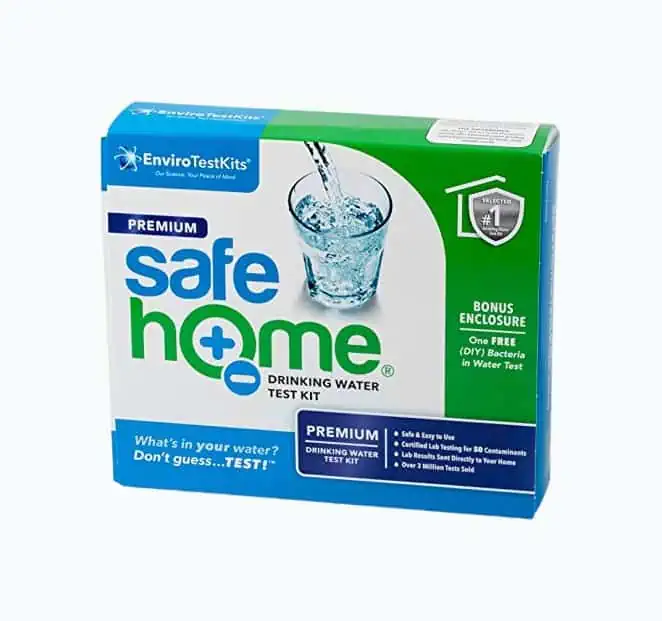
- Very accurate results
- EPA-certified labs
- Tests for 50 contaminants
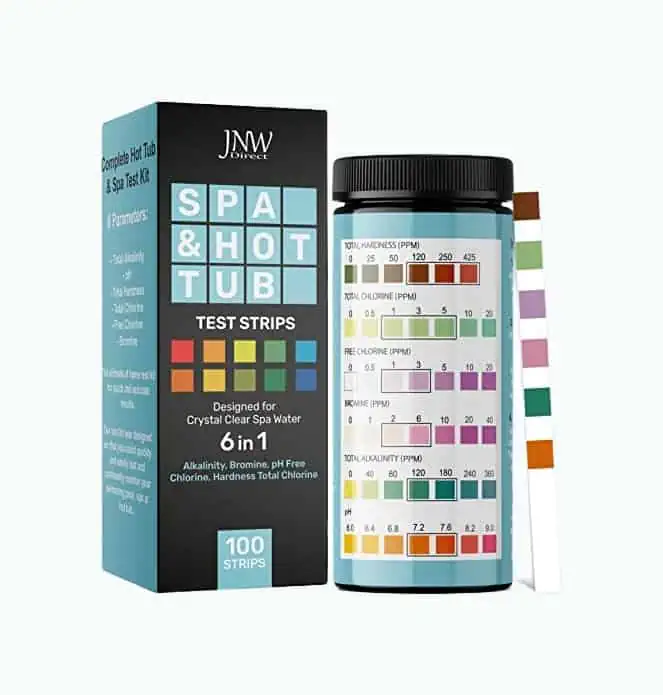
- Free e-book
- Measures five aspects of your water
- Includes 100 strips
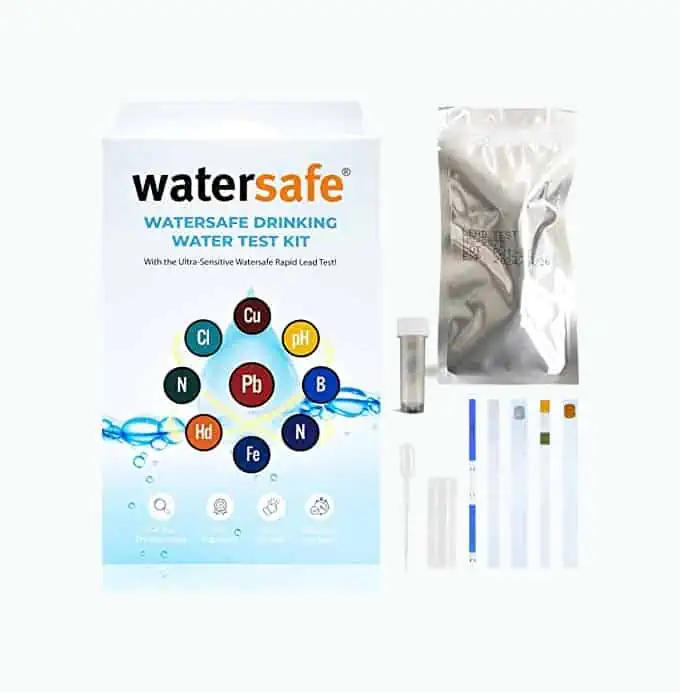
- Results in 10 minutes
- Wide test range
- EPA-certified
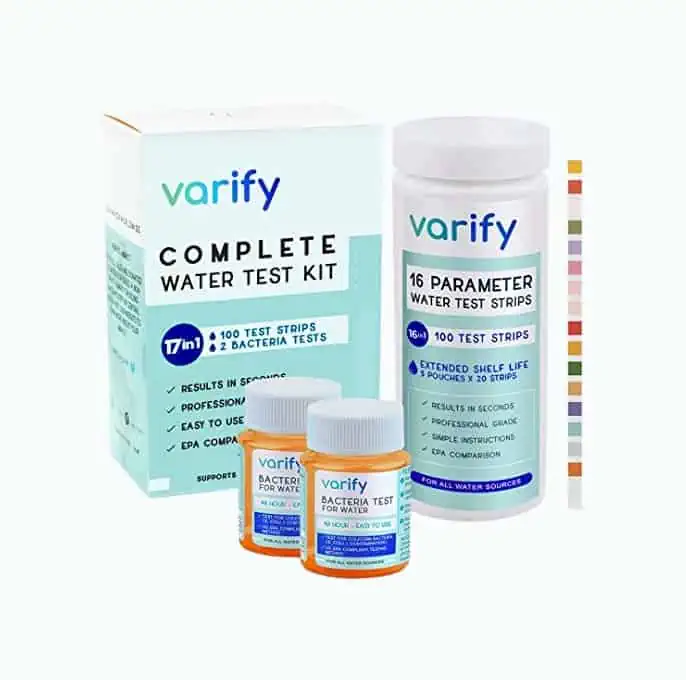
- Complete water test kit
- Easy to follow instructions
- Suitable for spas, pools, taps, and wells
Review Methodology: At Sensible Digs, we pride ourselves on conducting rigorous analysis and thorough research to provide you with reliable data and hands-on reviews of the best water test kits available. Our experienced professionals utilize benchmark tests and comparisons to track performance and measure criteria that matter to you. We’ll guide you through the assessment and evaluation process, highlighting key decision-making factors such as accuracy, ease of use, and comprehensiveness of results. Our reviews also include an in-depth look at the design choices of each kit, and their impact on user experience. Rest assured, our findings are based on facts and firsthand evidence, and our aim is to guide you towards the best product that sets itself apart from competitors.
Signs That You Need to Test Your Water
If you have a municipal water supply, every year — usually around July — you should receive a water quality report from your supplier (1). This will give you a good sense of how safe your water is when it leaves the supplier, but this doesn’t necessarily mean it will be the same quality when it reaches your home. There are a few reasons that you might want to personally test your water.
Types of Water Test Kits
There are numerous testing kits to choose from but most of them fall into one of six categories:
Color Disk Kits
These tests can detect impurities and chemicals such as chlorine, silica, or iron. They are more expensive and less user-friendly than most other types, so they are not among the most popular testing kits.
These kits generally test one chemical at a time. They work by comparing two narrow transparent tubes in a “comparator box”. One tube is filled with tap water, while the other one contains a mix of water and powder.
You turn the small wheel on the comparator box until you discover the exact amount of the tested chemical in milligrams per liter.
Pros
- Better color comparison than strips
- Results in less than a minute
- Accurate measurement
Cons
- Only tests for one contaminant
Test Strips
Test strips are one of the most affordable and user-friendly types. They can also identify a wide range of contaminants.
The kit usually contains a large number of strips, each intended to test for a different contaminant. You dip the strip into a glass of tap water and wait a few seconds for the strip to change color.
Then, compare the color of the strip to the manufacturer’s chart to determine the level of various contaminants. Some test strip kits are designed to detect one specific compound or contaminant type, such as heavy metals or hard water.
Pros
- Easy to use
- Immediate results
- Affordable
Cons
- Colors can be vague and might not match the chart exactly
TDS (Total Dissolved Solids) Meters
Also known as hand-held or digital testers, TDS meters are both accurate and simple to operate. These devices measure the overall level of inorganic compounds — such as sulfate or chloride — present in the water.
They are barely larger than a pen and display their results on a digital screen. They measure contaminants in PPM, or parts per million. However, they won’t be able to provide levels of specific chemicals or detect bacteria.
Some models also measure the water temperature, which can be helpful when checking a swimming pool. They can also measure electrical conductivity, which is largely determined by its salt concentration. The purer the water, the lower the electrical conductivity will be.
Take Note
Pros
- Digital display
- Immediate results
- Some models measure temperature and electrical conductivity
Cons
- Require batteries
- Some models require calibration
Bacteria Testers
These testers are designed specifically to identify various types of bacteria present in the water. They aren’t meant to detect metals or chemicals.
Fill the kit’s transparent container with tap water — it will usually turn purple. Leave it for 36 to 72 hours, and keep it away from sunlight.
Compare the water’s color to the kit. Generally speaking, if the water turns yellow, bacteria are present.
Be Careful
Pros
- Clear results
- Simple instructions
- Affordable
Cons
- Can take multiple days to get results
Lab Tests
Some tests need to be sent to a laboratory to be analyzed by experts. You will need to fill in a form and drop off — or mail — your test. It will usually take about a week for you to receive the results.
Lab tests are considered the most accurate method to test the water, and will generally include advice on how to treat it.
Pros
- Most accurate testing method
- Often includes treatment advice
- Results provided by experts
Cons
- Usually takes about a week to receive the results
Lead Tests
These tests are specifically designed to measure the lead content in your water. Although they are strips, they differ from standard water testing strips.
The package contains a pipette to transfer a small amount of water into a narrow vial. Only place the capacity of one pipette into the tester. Place the strip inside and wait for 10 minutes without touching the paper or the container.
One or two blue lines will slowly appear. If the left line is darker, the result is negative. However, if the right line is darker — or both are — your water contains lead.
Pros
- Easy to use
- Designed for a specific contaminant
- Inexpensive
Cons
- Results are sometimes unclear
Choosing the Best Water Test Kit
With various test kits to choose from, it might be unclear which type you need. If you consider a few important factors, it should give you a better sense of the best kit for your water.
The Best Water Test Kits of 2024
Knowing how to test your water will help you ensure that it doesn’t contain harmful contaminants, making it safer for you and the rest of your household. After looking at numerous products, we have reviewed seven of the best water test kits that are currently available. This includes evaluating their accuracy, how they are used, and which contaminants they can and can’t detect.
HoneForest TDS Meter Water Quality Tester
Best Digital Water Test Kit
This digital HoneForest TDS tester is ideal for anyone who wants quick results. Although it won’t specify which impurities are present in your water, it will give you a general sense of how healthy your water is.
The electronic pen measures three aspects of your water. It detects the amount of total dissolved solids — TDS — present in the water. This is displayed as “parts per million” or PPM, meaning the closer to zero the reading is, the healthier the water will be.
It will also assess the water temperature and electrical conductivity. These measurements are important when monitoring water quality in a pool or for aquaculture.
The screen is lit by a green LED light for improved readability. You will even be able to use it in the dark.
Pros
- 3-year warranty
- Measures temperature and electrical conductivity
- The digital display improves readability
Cons
- Unlike many digital models, it doesn’t measure pH levels
Product Specs
| Type of test kit | TDS meter |
| Contaminants detected | Total dissolved solids |
| Checks for bacteria | No |
| Result Speed | 3–5 seconds |
Our Ratings
User Experience
Health Metric Premium Water Hardness Test Kit
Best Test Kit for Hard Water
Your priority when choosing a water test kit is usually your personal health, but you might also be concerned about protecting your plumbing appliances and hardware.
Hard water can cause mineral build-up, potentially clogging pipes. It can also dry your skin and make your hair brittle. To prevent that, this Health Metric kit is designed specifically to test how hard your water is.
It contains 50 test strips, which can be used within a year. Just be sure to keep the lid tightly closed and not to handle them with wet hands to prevent moisture from affecting them.
- Dip the strip in a glass of water for one second.
- Leave the strip for another 30 seconds.
- Compare the colored pad to the provided chart to determine how hard the water is.
Results are provided in parts per million (0 to 425 PPM) and grains per gallon (0 to 25 GPG).
Pros
- Results in 30 seconds
- Strips for 50 tests
- The large color chart is easy to read
Cons
- Some users found the colors in the chart too similar
Product Specs
| Type of test kit | Strips |
| Contaminants detected | 1 |
| Checks for bacteria | No |
| Result Speed | 30 seconds |
Our Ratings
Personal Perspective
Coliform Bacteria Test Kit for Drinking Water
Best Water Test Kit for Bacteria Detection
If your main concern is the presence of bacteria in your water, it might not be worth spending the extra money to test for chemicals or heavy metals.
This Health Metric kit is designed specifically to test for three pathogens: total coliform, fecal coliforms, and E.coli bacteria (6).
The kit will enable you to test your water whether it comes from a public supply or a well. A detailed step-by-step guide is included to walk you through the testing process.
- Fill the container.
- Close the lid.
- Shake it for 20 seconds.
- The water should turn purple.
- Place the jar in a room no colder than 70 degrees Fahrenheit.
- Leave the test away from the sunlight for 48 hours.
- If the water changes color from purple, it is contaminated.
Pros
- No lab testing is required
- Straightforward testing process
- Results are easily understood
Cons
- Only detects three types of bacteria.
Product Specs
| Type of test kit | Bacteria Test |
| Contaminants detected | None |
| Checks for bacteria | Yes — three types |
| Result Speed | Up to 48 hours |
Our Ratings
Community Feedback
Safe Home Premium Drinking Water Test Kit
Best Lab Test Kit
This Safe Home lab testing kit enables you to check for impurities with great accuracy and can detect an extensive list of 50 contaminants. The kit includes a testing vial, so you won’t need to use your own container.
Shipping your sample to the EPA-certified laboratory is free when you use USPS. You will receive the test results via email or physical mail, depending on your preference.
The reports are easy to read and will explain how safe or contaminated your water is in great detail. You will also receive advice on various solutions if your water needs treatment.
For quicker testing, the package also includes an at-home bacteria test:
- Fill the dedicated jar.
- Wait about 24 hours.
- If the water turns green, there are likely bacteria in your water.
Pros
- Most accurate results
- EPA-certified labs conduct the tests
- Includes at-home bacteria testing
- Reports offer advice on possible treatments
Cons
- Some reviewers had to wait three weeks to receive their results
Product Specs
| Type of test kit | Lab testing and home bacteria testing |
| Contaminants detected | 50 |
| Checks for bacteria | Yes |
| Result Speed | Bacteria: About 24 hours Lab test: Not indicated |
Our Ratings
First-Hand Impression
JNW Direct Spa Test Strips for Hot Tubs
Best Water Test Kit for Spas
This JNW Direct test kit is designed specifically for spas and the contaminants that affect them. Using it should protect your spa equipment’s lifespan and make it easier to maintain.
Your purchase includes 100 test strips, so this product offers excellent value for money. You will also be able to test saltwater and freshwater pools, not just spas and hot tubs.
This kit checks five different aspects of your water to ensure it is suitable for your spa:
- Water hardness
- Chlorine
- pH
- Bromine
- Alkalinity
This product includes a free downloadable e-book. It contains useful information about spa and hot tub water.
Pros
- Free informational e-book
- Checks the five most important aspects of water quality for spas
- Contains 100 test strips
Cons
- Colors can bleed to the next square pad, making them difficult to read
Product Specs
| Type of test kit | Strips |
| Contaminants detected | 5 |
| Checks for bacteria | No |
| Result Speed | Not indicated |
Our Ratings
User Experience
Watersafe 10-Parameters Easy Water Test Kit Strips
Most User-Friendly Water Test Kit
If you want a kit that is easy to use and provides immediate results, this Watersense product is well worth considering. It contains strips to test your water and can be used to identify numerous contaminants, including:
- Bacteria
- Lead
- Nitrate and nitrite
- pH
- Copper
- Pesticides
- Iron
- Hardness minerals
This DIY water test kit is made in the USA and has been extensively tested by an EPA-certified laboratory for accuracy. You can be confident that the results you receive will be accurate.
Reviewers praise how simple the strips are to use and how easy it is to interpret the test results.
Pros
- Money-back guarantee
- Simple to use
- Affordable
Cons
- One-time use only
Product Specs
| Type of test kit | Test strips |
| Contaminants detected | 8 |
| Checks for bacteria | Yes |
| Result Speed | 10 minutes |
Our Ratings
Personal Perspective
Varify 17-in-1 Complete Water Test Kit
Best All-Round Water Test Kit
If you are concerned about what might be in your water and want to test it thoroughly, this complete kit from Varify will check for 17 different contaminants. These include bacteria, metals, and other impurities.
The strips can detect 13 different compounds, from chloride to sulfate, copper, and iron. They are highly sensitive to ensure they provide accurate readings.
You will also receive a bacteria test with your purchase:
- Fill the bottle with water.
- Shake it for 20 seconds.
- Wait for 48 hours and check for color changes in the water.
After 48 hours, if the water turns green, pathogenic bacteria are present. A lead test is also included.
Pros
- A complete water testing solution
- Easy-to-follow instructions
- Suitable for spas, pools, taps, and well water
Cons
- If handled improperly, strip colors can bleed into each other
Product Specs
| Type of test kit | Strips, bacteria |
| Contaminants detected | 17 |
| Checks for bacteria | Yes |
| Result Speed | Regular strips: 10 to 30 sec; Bacteria: 48 hours |
Our Ratings
Community Feedback
| Product | Best | Type | Contaminants detected | Checks for bacteria | Result Speed |
|---|---|---|---|---|---|
| HoneForest TDS Meter | Digital | TDS meter | TDS | No | 3–5 seconds |
| Health Metric Hardness Test Kit | Hard Water | Strips | 1 | No | 30 seconds |
| Coliform Bacteria Test Kit | Bacteria Detection | Bacteria Test | None | Yes | 48 hours |
| Safe Home Drinking Water Test Kit | Lab Test | Lab | 50 | Yes | 24 hours |
| JNW Direct Spa Test Strips | Spas | Strips | 5 | No | N/A |
| Watersafe 10-Parameters Easy Test Strips | User-Friendly | Strips | 8 | Yes | 10 minutes |
| Varify 17-in-1 Water Test Kit | All-Round | Strips | 17 | Yes | Depends on contaminant |
Water Test Kit Uses — Do’s and Don’ts
Here are a few important tips to keep in mind when using a water test kit:
- Read the instructions: Each water test kit will include specific directions to follow.
- Wash your hands: Before and after using the test, wash your hands. If you have anything on your hands, it could invalidate the test results.
- Keep a timer nearby: All test methods will take a specific amount of time to work — from a few seconds to a few days.
- Keep your kit closed: Only open the kit when you are ready to use it, whether it is a bacteria container or a paper strip. Otherwise, the moisture in the air could ruin your results.
- Take water from a frequently used faucet: Kitchen and bathroom faucets are generally the most reliable as they are used daily.
- Double-check: If you want to ensure the results are accurate, repeat the test or use another one and check that the findings match.
Are Home Water Test Kits Accurate?
Water test kits are available in various forms that offer different levels of accuracy. The colors of water test strips don’t provide exact numbers. They display a color that can be vague and easily misread — especially if you are colorblind. They are helpful for showing that your water is contaminated but won’t give you a strong sense of how badly.
Digital testers are far more effective for finding out how severely your water is contaminated — in parts per million or PPM. However, they won’t be able to identify individual contaminants.
For the most accurate results, lab tests are recommended. They are conducted by chemists who know precisely what to look for and can identify and measure impurities and bacteria. Ensure that the laboratory you choose is certified by the relevant authorities (7).
